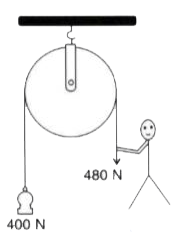The overall gain of a multistage amplifier is 100. When negative feedback is applied, the gain reduces to 10. Find the fraction of the output that is feedback to the input.
To find the fraction of the output that is fed back to the input in a multistage amplifier with negative feedback, we can follow these steps:
Step 1: Understand the Given Information
We know the following:
- Gain without feedback (Av) = 100
- Gain with feedback (Avf) = 10
Step 2: Write the Formula for Gain with Feedback
The relationship between the gain with feedback and the gain without feedback is given by the formula:
Avf=Av1+βAv
where β is the feedback fraction.
Step 3: Substitute the Known Values
Substituting the known values into the formula:
10=1001+β⋅100
Step 4: Rearrange the Equation
To eliminate the fraction, we can multiply both sides by 1+β⋅100:
10(1+β⋅100)=100
Expanding this gives:
10+10β⋅100=100
Step 5: Simplify the Equation
Now, we can simplify the equation:
10β⋅100=100−10
10β⋅100=90
Step 6: Solve for β
Now, divide both sides by 1000 (which is 10⋅100):
β=901000=0.09
Final Answer
The fraction of the output that is fed back to the input is:
β=0.09
---
We know the following:
- Gain without feedback (Av) = 100
- Gain with feedback (Avf) = 10
The relationship between the gain with feedback and the gain without feedback is given by the formula:
Avf=Av1+βAv
where β is the feedback fraction.
Substituting the known values into the formula:
10=1001+β⋅100
To eliminate the fraction, we can multiply both sides by 1+β⋅100:
10(1+β⋅100)=100
Expanding this gives:
10+10β⋅100=100
Now, we can simplify the equation:
10β⋅100=100−10
10β⋅100=90
Now, divide both sides by 1000 (which is 10⋅100):
β=901000=0.09
The fraction of the output that is fed back to the input is:
β=0.09
Topper's Solved these Questions
- SEMICONDUCTOR DEVICESBOOK - AAKASH SERIESCHAPTER - SEMICONDUCTOR DEVICESEXERCISE - EXERCISE -I (ENERGY BANDS AND CLASSIFICATION OF SOLIDS )
41 Videos
- SEMICONDUCTOR DEVICESBOOK - AAKASH SERIESCHAPTER - SEMICONDUCTOR DEVICESEXERCISE - EXERCISE -I (P-N JUNCTION DIODE)
30 Videos
- SEMICONDUCTOR DEVICESBOOK - AAKASH SERIESCHAPTER - SEMICONDUCTOR DEVICESEXERCISE - Problems (LEVEL-II)
9 Videos
- RAY OPTICSBOOK - AAKASH SERIESCHAPTER - RAY OPTICSEXERCISE - PROBLEMS ( LEVEL-II)
60 Videos
- UNITS AND MEASUREMENTBOOK - AAKASH SERIESCHAPTER - UNITS AND MEASUREMENTEXERCISE - PRACTICE EXERCISE
45 Videos
Similar Questions
Knowledge Check
Two amplifiers are connected one after the other in series (cascaded). The first amplifier has a voltage gain of 10 and the second has a voltage gain of 20 . If the input signal is 0.01 V , calculate the output AC signal .
A4VB1VC2VD6 VA transistor has a current amplification factor (current gain) of 50. In a common emitter amplifier circuit, the collector resistance is chosen as 5Ω and the input resistance is 1Ω. The output voltage if input voltage is 0.01 V is
A-2 VB−5VC-2.5 VD-1 V
A npn transistor operates as a common emitter amplifier, with a power gain of 60 dB. The input circuit resistance is 100Ω and the output load resistance is 10kΩ. The common emitter current gain β is:
View SolutionA transistor oscillator is
(i) An amplifier with positive feedback
(ii) An amplifier with reduced gain
(iii) The one in which DC supply energy is converted into AC output energy. Then
View SolutionAn npn transistor operates as a common emitter amplifier, with a power gain of 60 dB. The input circuit resistance is 100Ω and the output load resistance is 10kΩ.The common emitter current gain β is :
View SolutionThe adjacent Figure shows a fixed pulley used by a boy to lift a load of 400 N through a vertical height of 5 m in 10 s. the effort applied by the boy on the other end of the rope is 480 N.

(a) What is the velocity ratio of the pulley ?
(b) What is the mechanical advantage ?
(c) Calculate the efficiency of the pully.
(d) Why is the efficiency of the pulley not 100% ?
(e) What is the energy gained by the load in 10 s?
(f) How much power was developed by the boy in raising the load ?
(g) The boy has to apply an effort which is greater than the load he is lifting. what is the justification for using the pulley ?
View SolutionIn a common emitter transistor amplifier, the output resistance is 500KΩ and the current gain β=49. If the power gain of the amplifier is 5×106, the input resistance is
View SolutionA triode value has amplification factor 21 and dynamic plate resistance 10kΩ. This is used as an amplifier with a load of 20kΩ). Find the gain factor of the amplifier.
View Solution
